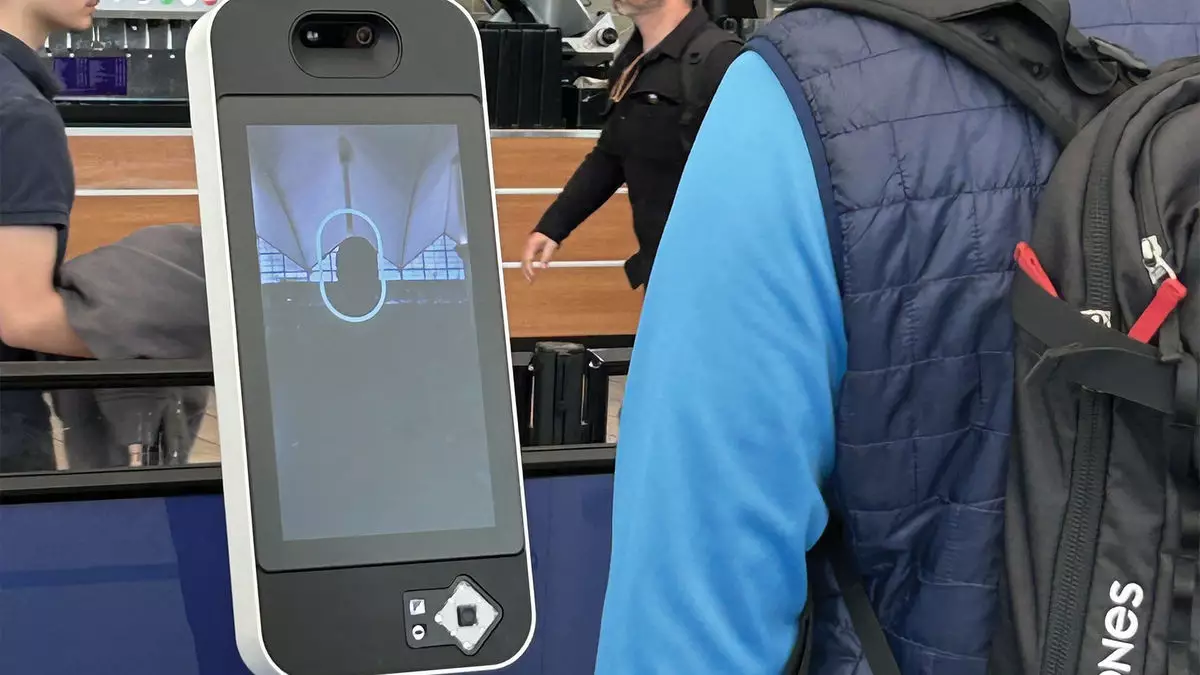The airport security experience has long been a source of frustration for travelers, but that may soon change with the introduction of advanced biometrics. Clear, a private airport security service, is making significant strides towards providing a more efficient, frictionless approach to identity verification. As of now, the EnVe facial recognition pods are revolutionizing the way millions of flyers navigate checkpoints. With a notable 70% adoption rate among Clear’s 30 million members within just a few months of their rollout, this technology represents a seismic shift in the travel experience.
The EnVe pods, deployed in over two-thirds of Clear’s operating locations, enable a biometric verification process that drastically cuts down on the time spent waiting in lines. Traditional methods, which relied heavily on iris scans or fingerprint checks, are now being outpaced by these quick facial recognition systems. By simply stopping for a moment to let their face be scanned, travelers can breeze through security in a matter of seconds—a process touted as being five times more efficient than its predecessors. This dramatic enhancement not only highlights Clear’s commitment to customer service but also sets a new standard for the industry.
The Broader Vision: Automation and Convenience
As Kyle McLaughlin, Clear’s executive vice president of aviation, emphasizes, the EnVe pods are just one piece of a larger puzzle aimed at creating a fully automated, frictionless travel experience. This initiative includes the development of a concierge service already being piloted at select airports, showcasing Clear’s ambition to cater to a wide variety of traveler needs. Whether it’s helping families with children navigate the airport or providing a luxurious treatment for those seeking elite services, Clear is tapping into multiple demographics.
Moreover, the testing of automated entry gates in locations like Greenville and Oklahoma City hints at the future of airport security. By reducing human oversight in ID checks, these machines promise to streamline the travel experience even further. The real question remains: how will these advancements coexist with the TSA’s own efforts in biometric screening?
The TSA’s Touchless Transformation
As competition heats up in the airport security landscape, the Transportation Security Administration (TSA) is implementing its own solutions through the Touchless Identity Solution program. By partnering with major airlines, the TSA is beginning to offer touchless PreCheck lanes in select airports, allowing travelers to glide through checkpoints with minimal interaction. For those who opt in, the transition to a hands-free experience via biometric verification is enticing, cutting waiting times significantly.
However, the TSA’s touchless initiative has faced challenges since its inception. Political opposition rooted in privacy concerns, as well as financial constraints, have slowed deployments, meaning that widespread adoption remains a moving target. In contrast, Clear’s established network of biometric lanes across 166 airports offers an immediacy and reliability that the TSA’s slower rollout struggles to match.
McLaughlin asserts that even as the TSA expands its touchless lanes, travelers will still find value in the predictability that Clear offers. The convenience of knowing that regardless of which airport you’re flying through, a uniform experience awaits, is a significant advantage that Clear is keen to leverage.
Targeting the Luxury Market
With the addition of the Ambassador Assist service, Clear is also targeting a niche market—those seeking high-touch, premium travel experiences. For a fee ranging from $49 to $149, travelers can receive dedicated assistance right from their arrival at the airport to their departure gate. This service not only caters to families and senior citizens but also attracts those who prioritize luxury in their travel encounters.
This strategic outreach highlights an important trend: the desire for comfort and personalization in an era dominated by technology. While biometric systems are often seen as impersonal, Clear’s concierge service serves as a testament to the ongoing human element in travel—and it’s one that the company appears eager to promote.
The Future of Airport Security: An Ongoing Battle
As the airport security landscape continues to evolve, Clear’s innovations may prompt a reimagining of how security checks are designed. With stakeholders from both private-sector firms and government agencies vying for dominance, travelers can expect a future where efficiency, convenience, and personalization are prioritized. While challenges such as privacy concerns and regulatory hurdles remain, advancements like the EnVe pods and the Ambassador Assist service signal an encouraging trend toward making the airport experience less of a hassle and more of a seamless journey.
The ongoing competition will undoubtedly spur further investments in technology, ensuring that enhancing customer experience remains at the heart of the airport security revolution. The ultimate victor in this race might just be the modern traveler, who increasingly prioritizes speed, ease, and personalization in every aspect of their journey.

